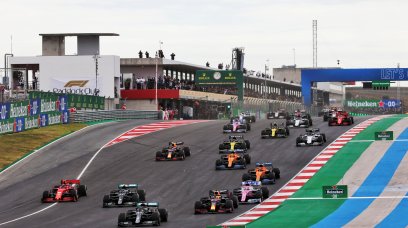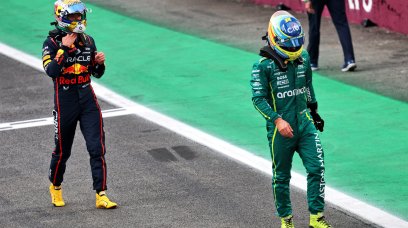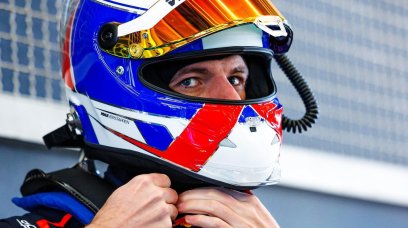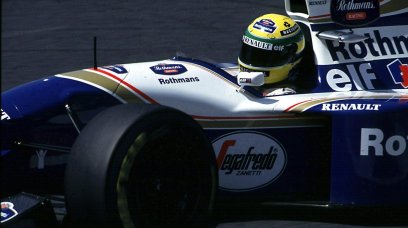Pierre Gasly believes the FIA put his life in danger during the opening lap chaos of the rain-affected Japanese Grand Prix. The Frenchman had a near-miss with a recovery vehicle that entered the track to recover the stricken Ferrari of Carlos Sainz, who aquaplaned off into the barrier and bounced back onto the track. Speaking exclusively to RacingNews365.com , Gasly talked candidly about what was going through his mind when he passed the crane in the poor visibility. "I'm not gonna lie when I passed next to the tractor, the second that followed I knew that I was two meters away from killing myself," said Gasly. The impact from Sainz caused pieces of advertising hoarding to be strewn across the track, which was collected by Gasly as he went past the wreckage and damaged his front wing. Gasly pitted for repairs and went back out at pace to join the back of the field behind the Safety Car. But as he approached the incident zone, the crane had been deployed by race control - unbeknownst to the Frenchman, who was driving at 189kph. "I went through there thinking there was nothing on track, I had to catch up on my delta," explained Gasly. "So, I was following the speed that I could go at, which was completely inappropriate to the situation and the incident that was occurring on the racetrack." In the FIA's report into the opening laps of the race , the governing body admitted that "it would have been prudent to have delayed the deployment of the recovery vehicles on track" with hindsight of the conditions. Gasly however was irate, believing the actions of race control put him and other drivers in a dangerous position. "I was furious because they put my life in danger without me knowing," he said. "That was for me unacceptable, because if I had known [the crane was on track], it doesn't matter my delta lap time or whatever, my life matters more than any second that I will recover under the Safety Car, especially knowing there was a red flag."
FIA found Gasly to be driving 'in a reckless manner'
Shortly after the race the stewards issued Gasly with a 20-second race time penalty and two Super Licence penalty points for speeding under red flag conditions. The FIA noted that the reason why Gasly was so much quicker catching the Safety Car was because he was 18 seconds slower than the Safety Car delta time when he reached the pit entry. As this is not reset when a car pits, he was allowed to go quicker when he rejoined the track. The Suzuka report explains: “Consequently, for the lap that GAS drove after pitting, despite driving considerably faster than what would be expected under these circumstances, he was still in conformity with the requirements of the Safety Car delta controls that were in place." Gasly says he was aware that there was a probability that he could lose control of his car going fast in the tricky conditions. "I'm not gonna lie, I saw myself, I was pushing. There was a probability that I could lose control of the car at that moment and this could have been tragic," he admits. The red flag came out just one second following Gasly passing the incident zone, which in addition to the recovery vehicle, also had marshals on site. Even though he conformed to the requirements of the Safety Car delta, the FIA believe he was driving in a "reckless manner" by not respecting the flags. The report reads: “Without undermining responsibilities regarding safety on track, we must also consider as detailed above that GAS drove in a reckless manner by not respecting the flags, thereby ignoring the basic safety rules."
Gasly believes recovery vehicle should've been deployed after red flag
Despite the traditional methods and procedures in place to warn drivers of incident zones on track, Gasly feels the extraordinary conditions warranted a more cautious approach from race control. "Once I saw the red flag out, I just didn't understand at all why at that moment we didn't wait for us to all make it back to the pits, and then put the tractors on the racetrack," explained the Frenchman. "We stayed in the box for an hour and a half, which gave plenty of time for the cranes to go there and clean what they had to clean." The track was the scene of a tragic accident in 2014, when Gasly's childhood friend Jules Bianchi lost his life after hitting a stationary recovery vehicle in similar conditions. "Based on what's happened in the past, on that racetrack, in these conditions, when we all start the race in these conditions we will think about this and we all know what's happened - it's all in the back of our heads," said Gasly. "A rainy day in Suzuka with a lot of rain coming, it's just there, we've got to remember. For me, I was just furious that we didn't learn from those mistakes, because we lost Jules for these reasons."
FIA to make procedural changes to Virtual Safety Car system
The Bianchi incident led to the introduction of the Virtual Safety Car (VSC), but a further evaluation of the system will be conducted for 2023. This includes a "dynamic VSC" which would change the delta speed before and inside the sectors on track in incident zones. This creates a short-term speed limit for drivers, similar to the 'Code 60' used in the Le Mans 24 Hours race. There will also be a consideration as to whether the pit exit is closed during Safety Car periods and only opened briefly when the train of cars pass, at the discretion of the race director. Further measures introduced at this weekend's United States Grand Prix to deter drivers from going too quickly under yellow flag and Safety Car conditions, include a redraft of guidelines for what is considered "not respecting the rules relating to yellow, double yellow, VSC and SC conditions."
Most read






